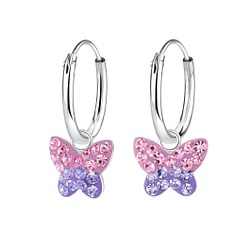The jewelry industry is booming. With more ways to sell than ever before, jewelry businesses are popping up everywhere you look. Jewelry has a lower initial investment than other fashion industries, making it more appealing to entrepreneurs as a largely ‘one size fits all’ product. While seasonal trends pop up, jewelry is a more stable market than footwear or clothing.
The key to creating a sustainable jewelry business is choosing the right pricing strategy. There’s lots to consider when pricing jewelry – from understanding your costs to value-based pricing and considering your market.
Researching Your Market
The first step to setting your pricing strategy is to research your market. The jewelry industry is constantly evolving, so you’ll want to focus on your target demographic and niche. The popularity of TikTok Shop and the growth of shopping features on social media means jewelry brands are no longer only selling through their websites.
How are similar jewelry brands marketing their products? What price are they charging for comparable products? What additional value can you give your customers? Research whether similar brands provide discount codes or frequently put their products on sale, as you’ll need to factor this into your pricing strategy to ensure you make a profit.
Understanding Your Costs
Your pricing strategy must consider the costs you’ll incur selling the product. These costs are more than just the wholesale price you pay to buy the item. You’ll need to consider shipping costs, website & operation fees, order fees, packaging costs, and a profit margin. Don’t forget to consider your marketing costs, especially if you plan to run paid advertising.
Focus on finding 925 silver jewelry wholesale best sellers at factory prices to curate your permanent collection and start to build your brand. Starting with affordable pieces will help reduce your initial costs, but you’ll want to make sure you’re factoring in all the additional costs you’ll incur when selling and shipping your jewelry.
Always check what the associated fees are with your chosen website or selling platform as they will vary and may include additional costs like listing fees.
Working with a Reliable Supplier for Consistent Designs
Most jewelry businesses don’t create in-house designs. Instead, they work with a sterling silver jewelry manufacturer and wholesaler for businesses of all sizes. Even if you’re buying from a wholesaler, you want to ensure there’s cohesion between the designs you choose – as if they had been created by your brand with your customers and jewelry niche in mind.
When choosing a wholesaler, check that they have a wide range of products that align with your brand and niche. How often do they add new products? Are items restocked on regularly? Most wholesalers will specialize in a specific type of metal, such as sterling silver, and may offer additional products, such as bracelet charms or toe rings.
Value-Based Pricing Strategy
Most jewelry brands opt for value-based pricing, curating their marketing and branding to allow them to pitch their jewelry at a specific price point. Think of brands like Tiffany & Co and Cartier. Their products don’t cost the thousands of dollars they sell them for to produce – especially Tiffany’s sterling silver collection.
Their pricing is based on the perceived value of the product and how much the customer believes it’s worth. If you’re choosing higher value-based pricing, you’ll want to elevate the customer experience to create more value. Invest in packaging, such as jewelry pouches and branded mailers to curate a better brand experience.
There’s more to consider for your pricing strategy than just the wholesale jewelry price. Researching is important to decide where to position your jewelry brand within your niche to grow a sustainable business. These four tips will help structure your pricing strategy and inform your marketing decisions.
